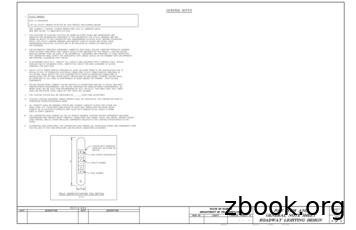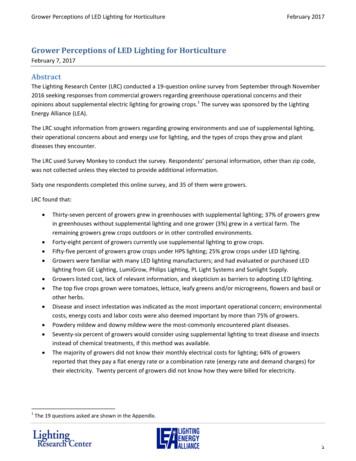National Lighting Energy Consumption
National Lighting Energy Consumption 390 Billion kWh used for lighting in all commercial buildings in 2001 LED ( .1% ) HID 22% Incandescent 40% Fluorescent 38% Lighting Energy Consumption by Major Sector and Light Source Type Breakdown of Lighting Energy Source: Navigant Consulting, Inc., U.S. Lighting Market Characterization, Volume I: National Lighting Inventory and, Energy Consumption Estimate, Final Report for US DOE, 2002
Impact of Electronic Ballasts and T-8 Fluorescent Lamps on Lighting Consumption Annual Shipment of Ballasts in US (1988 – 2003) 140,000 120,000 Fluorescent Lighting in Commercial Buildings (2001) 70% Total Magnetic Electronic % Electronic 60% 3% 100,000 50% 1% 3% T8 – less than 4’ 7% T8 – 4’ 3% 80,000 40% 60,000 30% 40,000 20% % Electronic T8 – More than 4’ All T-8 lamps 30% 8% T8 – U-bent T12 – less than 4’ T12 – 4’ T12 – More than 4’ T12 – U-bent All T-12 lamps 58% Compact – Pin-base Compact – Screw -in 1% 1% Compact – Pin-base – reflr Compact – Screw -in – reflr Circline 10% 20,000 0 0% 1988 1989 1990 1991 1992 1993 1994 1995 1996 1997 1998 1999 2000 2001 2002 2003 Year After 20 years, 50% of US lighting still uses inefficient magnetic ballasts Source: Navigant Consulting, Inc., U.S. Lighting Market Characterization, Volume I: National Lighting Inventory and, Energy Consumption Estimate, Final Report for US DOE, 2002 US Bureau of the Census
Controls and Communications Wired Bus Analog (0-10 VDC) Digital (DALI) Lighting ballast industry has selected DALI as its standardized wired digital protocol No generally accepted powerline communications scheme ZigBee is leading contender for future wireless lighting and building control products Control over Powerline Powerline Communications Radio Communications WiFi ZigBee
Lighting wastes energy because dimming lighting controls are not widely used Major Lighting Control Strategies Vacancy Detection or Scheduling Automatic Dimming with Daylight Tuning Strategies Personal dimming controls Institutional requirements Lumen Maintenance Demand Response
ALL lighting should be: Dimmable Addressable Affordable
Electricity Demand in California During 1999 y y y Summer Peak Demand (Megawatts) 60,000 50,000 Total Demand Extended Peak 40,000 30,000 Commercial 20,000 Residential Industrial 10,000 Agricultural and Other 0 1 2 3 4 5 6 7 8 9 10 11 12 13 14 15 16 Time of Day (End of Hour) 17 18 19 20 21 22 23 24
Dimming lighting during curtailments 30000 30000 30000 30000 Typical commercial building load profile 25000 25000 Peak demand reductions during curtailments 25000 25000 Lighting: Air conditioning: Other: 20000 20000 A/C 15000 15000 Lighting 10000 10000 75% 25% 10% 20000 20000 Dimmed lighting 15000 15000 A/C 10000 10000 Other 5000 5000 Other 5000 5000 00 11 33 55 77 99 11 11 13 13 15 15 17 17 19 19 21 21 23 23 Time Time of ofDay Day 00 11 33 55 77 99 11 11 13 13 15 15 17 17 19 19 21 21 23 23 Time Time of ofDay Day
Option 4: Full Wireless C S A A C S A A A C S A A A A A C S A A A A A A
Single Chip Mote Feasibility Demonstrated Wireless Control by single-chip mote demonstrated in ACM & Ballast Single Chip mounted to a board for integration with lighting components
A Hybrid Option: Analog Control (0-10 VDC bus) Accessible with Wireless Transmitters S C C S Analog Bus A S A Analog Bus A A C A S A C Analog Bus Analog Bus A A A A A A
WiLight: A Novel Application of EnergyScavenging Wireless Communications Battery-less Transmitter Bi-Level lights (2 x 20 Amps) Transceiver Radio Radio DR modes: 1. Normal 2. Moderate 3. Severe Intelligence Radio Bridge Dual Relays Analog Dimming Building DR Client WiLight Internet Demand Response Price Server Dimmable lights (up to 50 analog dimming ballasts)
Energy Implications and Economic Impact of Converting to Wireless Lighting Controls National Energy Savings with Wireless Lighting Controls (30% Saturation) Commercial Lighting Use (BkWh/year) Millions of Ballasts Shipped 600 100.0 500 80.0 Business As Usual 400 60.0 30% Controls Saturation 300 Ballasts Sold (right scale) 40.0 200 20.0 100 0 25 24 20 23 20 22 20 21 20 20 20 19 20 18 20 17 20 16 Year 20 15 20 14 20 13 20 12 20 11 20 10 20 09 20 08 20 07 20 06 20 05 20 20 20 04 0.0
Cumulative Benefits: Installing Wireless Lighting Controls in 30% of Commercial Buildings by 2025 Energy 695 Billion kWh Energy Saved 52 Billion in Energy Cost Savings Environmental 139 MMTCe Carbon Avoided Equivalent 93 Million Cars Removed Economic & Industrial 400 Million Dimming Ballasts Sold 10 Billion Market Value
Key Barriers to Advanced Lighting Controls Not cost-effective to add control wiring to existing buildings Delivering robust lighting control systems is challenge to industry Commissioning not properly understood Dimming inherently more complicated than non-dimming Quantifying the energy cost savings from lighting controls is inexact
Challenges Ahead Sustainable drop in the cost of dimming /ballast 100 Dimming Electronic Ballast (today) 80 60 The Challenge 40 20 0 Static Electronic Ballast Cost-Effective Dimming Electronic Ballast
Modernizing Our Offices Old technology Savings 35 BkWh in Energy 2.6 Billion Cost Savings 7 MMT Carbon avoided 4.5 million cars removed New technology
Modernizing Our Homes New technologies Old technology Savings 55 BkWh in Energy 4 Billion Cost Savings 11 MMT Carbon avoided 7.3 million cars removed
Standards for Eliminating the Incandescent Light Bulb 40 W Typical Lumens 60 W Typical Lumens 75 W Typical Lumens 100 W Typical Lumens Watts Wattage Limit per Lumen Range OR Lumens per watt per Lumen Range Lumen Ranges: 40, 60, 75, 100, 150 watts 140 120 100 80 National Implementation Schedule: 60 1. July 2012: 100 watt 40 CA only can start early 20 65 Twh saved annually by 2017 500 1000 1500 Lumens T ier 2 (2.5 * Best Fit) Best Fit Curve Harman/Upton Amendment to T itle 1 Low-Voltage Halogen (230 V, 3000 hours) 1500 hours (n 315) New Philips Halogena New Sylvania Elogic 2000 2500 T ier 1 (1.5 * Best Fit) US Industry Proposal (6/19/200 CEC SW T ier 2 (1/2008) LED (120 V, no hour rating) 1500 hours (n 210) Superbulbs LED Prototypes
Modernizing Our Nation’s Lighting Billion kilowatt-hours 800 700 633 600 500 92 48 513 72 38 400 Roadways 251 196 300 Homes 200 100 Stores 242 207 0 2007 2017 Offices
National Lighting Energy National Lighting Energy. Consumption 390 Billion kWh used for lighting in all . 390 Billion kWh used for lighting in all commercial buildings in commercial buildings in 2001 2001. LED ( .1%) Incandescent 40% . HID 22% Fluorescent 38%. Lighting Energy Consumption byLighting Energy Consumption by . Breakdown of Lighting .
Dec 06, 2016 · COMMERCIAL LIGHTING 01-13 14-29 industrial lighting hazardous area lighting cleanroom lighting INDUSTRIAL LIGHTING street lighting area lighting induction lighting landscape lighting CITYSCAPE LIGHTING 30-51 ballast light sources HID lamps spares price list A
Small Lighting controls 20 80/22 21 Small Lighting-only 20 80/22 18 Large Lighting controls 10 80/31 10 Large Lighting-only 10 80/31 7 2013-2014 Small Lighting controls 40 80/16 42 Small Lighting-only 20 80/22 21 Large Lighting controls 30 80/18 33 Large Lighting-only 10 80/31 10 Total 160 80/15 162
LIGHTING ( DEFINED ) OPEN AREA (ANTI-PANIC) LIGHTING ( UNDEFINED ) HIGH RISK TASK LIGHTING Emergency lighting standards tree. Escape route lighting. 1.Escape Route Lighting The emergency lighting on a route forming part of the means of escape from a point in a building to final exit. 2.Open Area (Anti-panic) Lighting The part of emergency .
2 15 ' 1 2 15 ' 2 15 ' notes: mainline 1 typ. lighting limits interchange 215' lighting limits interchange lighting limits interchange lighting limits interchange lighting limits interchange 3. 2. 1. interchange lighting limits n.t.s. reports indicates. of what that the lighting justification the mainline will be illuminated regardless
Pathway Lighting Prescolite/Hubbell Siltron Sure-Lites/Eaton Lighting solutions LIGHTING, FLOURESCENT Alera Lighting/Hubbell Apogee Translite Bartco Lighting Columbia Lighting/Hubbell Coronet Lighting Day-Brite/Philips Finelite Focal Point Lighting H.E. Williams Holophane/Acuity
18 3. Cross-platform news consumption 23 4. News consumption via television 29 5. News consumption via radio 32 6. News consumption via newspapers 39 7. News consumption via social media 52 8. News consumption via websites or apps 61 9. News consumption via magazines 64 10. Multi-sourcing 68 11. Importance of sources and attitudes towards news .
Fifty‐five percent of growers grow crops under HPS lighting; 25% grow crops under LED lighting. Growers were familiar with many LED lighting manufacturers; and had evaluated or purchased LED lighting from GE Lighting, LumiGrow, Philips Lighting, PL Light Systems and Sunlight Supply.
Swing trading is not intraday day trading, moving quickly in and out. It does not involve taking fast-paced breakout trades where you are looking for quick wins. Swing trading is about profiting from the next swing in the market higher or lower. This can take time to play out whether on the smaller or higher time frames. Yes, sometimes this will happen quite fast. If you want a strategy where .























